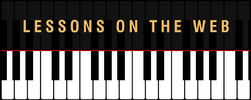|
Practicing our piano is probably the most important ingredient we use in growing our skills as musicians. There are probably as many ideas on what practicing really is as there are pianists, but one thing that all agree on, is that it is necessary. One of the first things that we learn is that practicing is problem solving. We identify problems in our playing and set out to resolve them so we don’t keep making the same mistakes. Once we realize the importance of practicing, we then learn the importance of how to practice and the reality that how we practice makes a difference in how fast we grow and how well we play. As a beginner we learn to practice one note at a time and one hand at a time. Then we start doing one measure at a time and slowly start adding in other measures to the ones that we’ve already learned. This breaking-down of the music into smaller parts is very beneficial in helping us really learn what we’re working on. It’s so important that most times if we aren’t willing to do this with a piece or exercise that we’re working on, we won’t really learn it that well. Playing through a whole piece or exercise from the beginning to the end is performing, not really practicing. There’s a time for both but our practicing won’t produce the results that we want if we only perform when it’s time to practice. Once we slow down a measure or a section and work on each note until we have them all learned, we experience that great feeling of accomplishment that comes from success. Today we’re going to talk about a different way of breaking down the music to help you even more with really getting the music mastered and into your fingers. Beforehand, we broke the music down into single notes and single measures. This time we’re doing the same but with a variation; we’re going to start playing in the middle of the measure or phrase, instead of at the beginning of the measure or phrase. I call this practicing between the measures because we’re focusing on the transitions between measures. It’s going to be a brain teaser because it will sound totally different from what you are used to, and it’s going to feel completely different from what your fingers are used to playing. This is exactly why it works so well! It’s important to change up the patterns that we set up for ourselves in our practicing and performing. Why? Because it helps us learn and know the music better. Once you have learned how to do this with some easier pieces to start with, you’ll be able to transform this technique to any piece or exercise that you’re working on. You just have to be prepared for it to feel and sound different from what you are used to practicing on. Take a few minutes to go through this video as I show you how to do this at the keyboard with an example so you’ll know how to do it on your own with other music. Enjoy this technique of practicing between the measures to help solidify any challenges you’re having going from measure to measure and also to reinforce what you’re learning in a new way. If you like my tips and lessons, you will love the courses over on my website. Whether you are a beginner looking to get a solid foundation to build on or you are looking to take you existing skills to that next level, the online music courses on my website https://www.pianolessonsontheweb.com will help you do just that.
|
AuthorMost blogs written by Archives
June 2020
Categories
All
|

 RSS Feed
RSS Feed